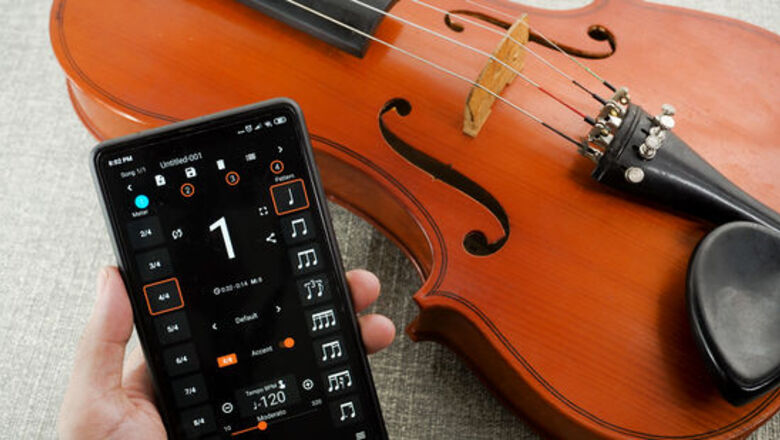
views
X
Research source
Learning Different Vibrato Techniques
Use the different vibrato techniques to create different moods. Arm vibrato is slower and broader, so it is typically used for slow, somber music. In contrast, the faster, shallower movements of wrist vibrato add color and flair to a more exuberant melody. Finger vibrato is quicker and brighter than wrist vibrato. Many songs work best with a combination of different types of vibrato to set the tone from one part of the song into the next. For example, a dramatic tango may start slow, then transition to a faster pace as the dance intensifies. You could use arm vibrato to provide a sense of tension building during the slow part, then transition to a wrist vibrato. EXPERT TIP Dalia Miguel Dalia Miguel Experienced Violin Instructor Dalia Miguel is a violinist and violin instructor based in the San Francisco Bay Area. She is studying Music Education and Violin Performance at San Jose State University and has been playing violin for over 15 years. Dalia teaches students of all ages and performs with a variety of symphonies and orchestras in the Bay Area. Dalia Miguel Dalia Miguel Experienced Violin Instructor Experiment with different kinds of vibrato. Dalia Miguel, a violin teacher, says: "You can create vibrato with your wrist or your finger. Finger vibrato is when you move your finger back and forth, and when you do it quickly, it sounds really pretty."
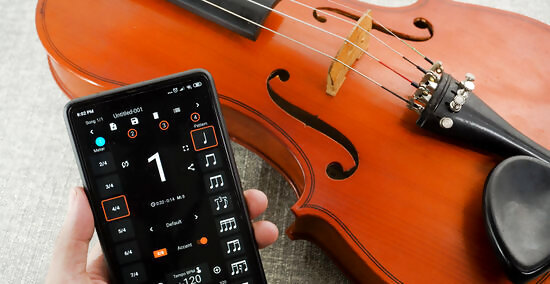
Set your metronome to a slow beat and work on your finger movement. Using your index finger, pick a note and bow the string to the slow beat of the metronome. Collapse the first joint of your finger, then roll it back up. The note may not necessarily sound different, but it will get you in the habit of moving your fingers correctly for vibrato. Make sure your finger is not moving up and down the string or bending the string too much. You want to keep the correct intonation while playing vibrato. Once you've got the movement down with your index finger, repeat the exercise with your middle finger, then your ring finger, and finally your pinky. Don't think you need to get the motion down with all of your fingers in one practice session – take your time and build the muscle memory one finger at a time.
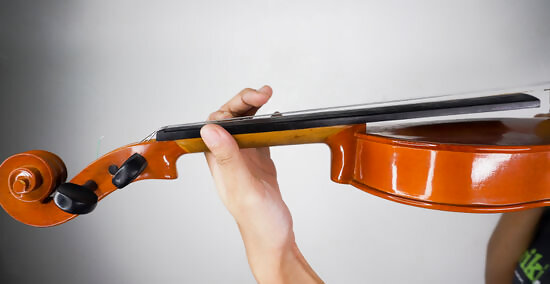
Make a knocking motion with your hand to perform wrist vibrato. Once you know how to roll your fingers, practice moving your wrist as though you were knocking on a door. Start slow, using a metronome, and gradually increase your speed. Practicing this movement away from your violin can help you develop muscle memory. Hold a stress ball or tennis ball in your hand with your arm at the same angle it would be if you were playing the violin and practice the knocking motion. If you place your pointer or ring finger on a note, you can practice vibrato by actually knocking your knuckles against the E-string tuning peg – just take care not to knock too hard or you might knock your E string out of tune.Tip: Keep your wrist and forearm completely relaxed to allow the movement to take place. If your muscles are tightened, there won't be enough space to create the vibrato. A shoulder rest can help hold your violin so you can concentrate your vibrato technique without having to worry about holding up your violin.
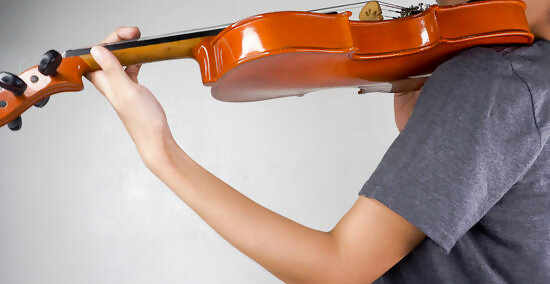
Expand your knocking movement to create arm vibrato. Arm vibrato is very similar to wrist vibrato – it's just a larger movement that involves your entire forearm, rather than just your wrist. Keeping your arm loose, repeat the same knocking motion you did with wrist vibrato. However, for arm vibrato the movement will come more from the elbow. It can help to imagine that instead of politely knocking on a door, you are pounding on a large castle door. As with wrist vibrato, practice the movement until you have the technique right.
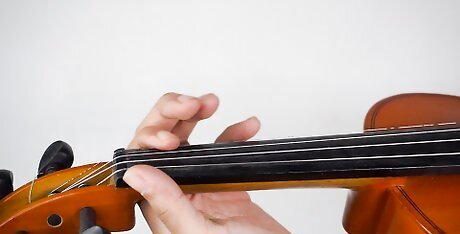
Start with a stronger finger. Learning how to create a clean vibrato with all 4 fingers will take some time – particularly with the weaker pinky finger. Your second or third finger is typically the best finger to start with when you're learning vibrato. Some accomplished violinists aren't able to create a strong vibrato with their pinky finger – so don't worry if you can't do it with all 4 fingers right away. Although it's less common for a skilled violinist to have trouble with the first finger, there are some who still have difficulty.
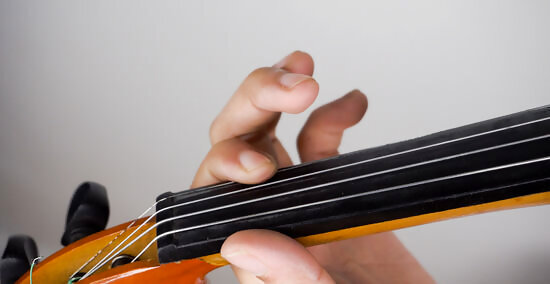
Exercise your fingers to increase your finger speed. Your fingers likely won't build the strength and mobility to create a strong vibrato simply by playing the violin. Regular finger exercises will strengthen the muscles in your fingers and improve the flexibility of your joints. Simply tapping on a tabletop is a basic exercise to improve your finger strength. Cup your hand along the edge of the table and tap your first finger 5 - 10 times, then move to the second and repeat the exercise, all the way down to your pinky. If you know how to play trills (alternating quickly between one note and the note above), you can use that technique to improve your finger strength as well. Stretch your fingers by opening your hand and curling each fingertip to the base of your thumb. Try to move your fingers independently without moving the other fingers. Hold the stretch for a breath or two, then release. Repeat 3 - 5 times with each finger of your left hand.
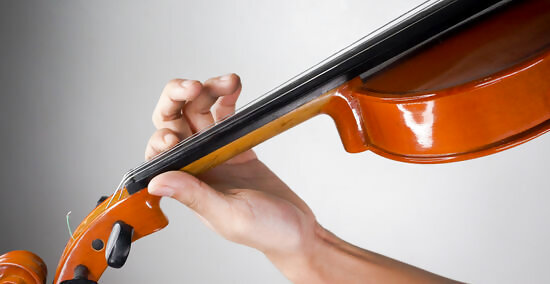
Try finger vibrato once you've built up your speed. To perform finger vibrato, you will make this same motion, but your fingers will move very fast. Finger vibrato is a more advanced technique than wrist or arm vibrato. It can take some time to build up the strength and mobility in your fingers to the point that you can do it with control. Finger vibrato uses the same rolling motion that you used when creating wrist or arm vibrato. However, you need to move your finger much faster so that your finger is vibrating against the string. Finger vibrato creates a light, wavering sound that can add liveliness to notes in faster pieces.
Coordinating Your Hands
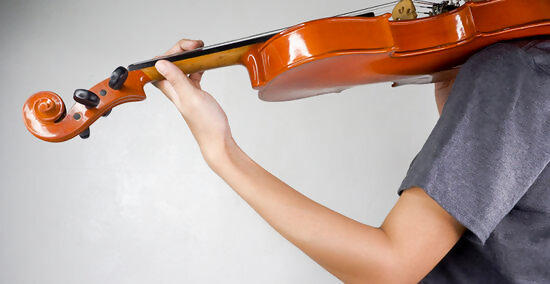
Start with a slower arm vibrato to add in the bow. When you first start learning vibrato, coordinating your hands can be the most difficult part. You'll likely find that you want to sync up the movement of your arm or wrist with your bowing. Using a slower vibrato to start can help you learn to operate your two hands independently of each other. When you first start practicing, don't be alarmed if your vibrato sounds more like a police siren or a dying cow than the beautiful, emotional instrument you know the violin to be. Keep at it, and you'll gradually develop a better tone. At this point, it's more important to make sure you've got the technique down than to produce the best sound. The sound will come, but if you don't have the technique you'll develop bad habits that could increase your risk of repetitive injuries later on.
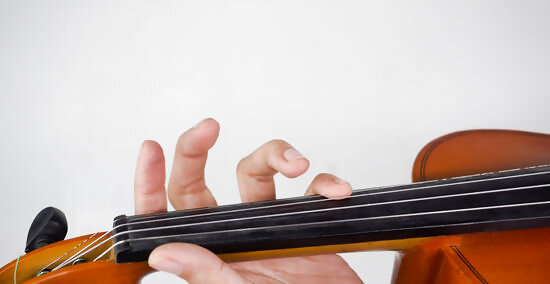
Try vibrato with all 4 fingers on all 4 strings. Once you have the basic motion down, increase your versatility by practicing with all fingers on all strings. Expect to have more difficulty with weaker fingers, such as your pinky finger. Some fingers and strings will be more difficult than others. Typically, your shorter, weaker pinky finger will be the most difficult. Don't worry if you can't get it right away, or if some fingers come more quickly than others – just keep at it.
Practice vibrato with single notes to develop muscle memory. Set your metronome to a moderate beat and try to produce a vibrato with every click of the metronome. At the same time, draw your bow slowly across the string for its entire length. It will take some adjustment to get used to moving your left arm in time with the metronome and not moving the right arm at the same time – this is why a strong vibrato takes practice to perfect. Set the metronome as slow as you need to start, and don't worry if you mess up. Just take a deep breath and start again. Dedicate a couple of minutes during each practice session to working on your vibrato technique. Any more than that and you'll likely get bored or become frustrated. Don't attempt to mix the technique in with your regular playing until you have the technique perfected using most (if not all) fingers. EXPERT TIP Elizabeth Douglas Elizabeth Douglas CEO of wikiHow Elizabeth Douglas is the CEO of wikiHow. Elizabeth has over 15 years of experience working and managing teams in the tech industry. She has held roles in multiple areas, including computer engineering, user experience, and product management. She received her BS in Computer Science and her Master of Business Administration (MBA) from Stanford University. Elizabeth Douglas Elizabeth Douglas CEO of wikiHow Elizabeth Douglas, Amateur Violinist, advises: “It's true that practice makes perfect. I think you should try practicing the vibrato hand position with one note, and then once you get comfortable doing it on notes that aren’t in a song, you can try doing vibrato on a few notes while you're playing something more challenging."
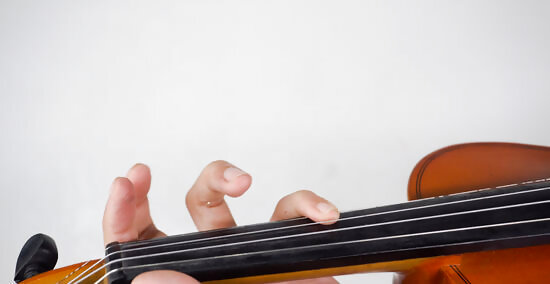
Move on to practicing vibrato with slow scales. Once you're comfortable creating vibrato with 2 or 3 fingers on all strings, start playing a scale very slowly and incorporating vibrato on each note. This will help you get used to using vibrato while also changing finger positions. Remember to keep your left arm and hand loose and relaxed as you play. Avoid the tendency to tense up on the violin as you change finger positions. As you play the scales, gradually increase the intensity (speed) of your vibrato.
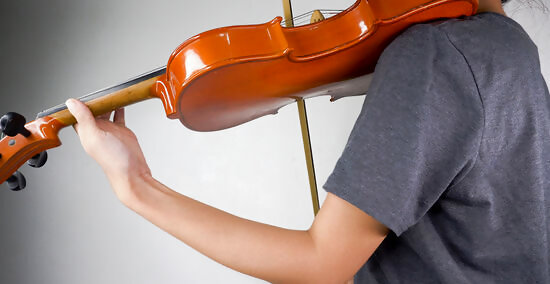
Incorporate vibrato into a long, slow song to continue your practice. Begin with a slow song that is relatively easy, or that you already know, so that you can focus on the vibrato rather than on finding the notes. Play the song slowly, using a metronome. If you're practicing alone, it can help to record your playing and listen to it later to check your intonation.
Using Vibrato in Music
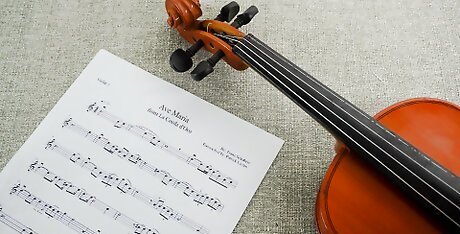
Start by adding vibrato to songs you already know. When you feel marginally comfortable with vibrato and have a strong technique, you're ready to start using vibrato when playing songs. Adding this technique to a song you already know enables you to understand how vibrato enriches the music. If you start with a song you already know, you won't have to worry about hunting for the notes to play as well as figuring out where to add vibrato. You can simply focus on the vibrato. It's a good idea to start with slower songs, so you won't feel rushed trying to slip in the vibrato.
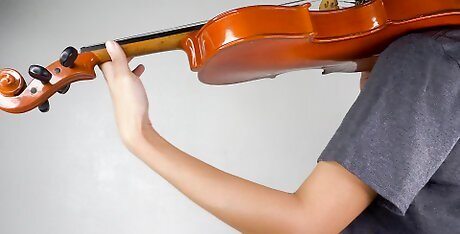
Try arm vibrato for slow or sad songs. The broad, deep vibrations of arm vibrato lend themselves best to somber melodies that evoke an intense emotional response. In songs such as "Ave Maria" you can use arm vibrato to great effect. Arm vibrato is typically most suitable for notes that are held out for a long time. This will enable you to get the most vibrations out of the tone.
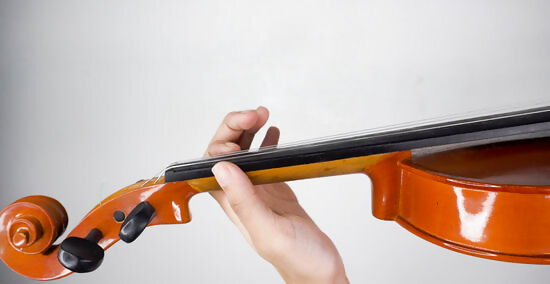
Use wrist or finger vibrato for fast and lively songs. Faster songs don't give you time to develop the proper movement for a full arm vibrato. However, a little wrist vibrato, particularly at the end of musical phrases, can add intensity and flavor to your playing. Practice using vibrato on different notes, and at different places in the song. Although you can always mimic great violinists, it can also be a lot of fun to try to put your own spin on an arrangement.Tip: With particularly fast sections of songs, you can use finger vibrato to pulse the note and maximize the tone of your instrument.
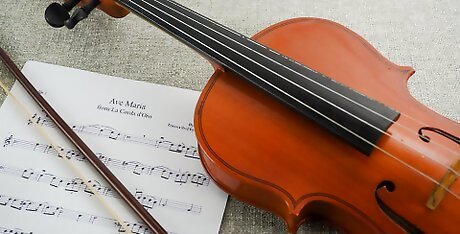
Combine vibrato techniques to add flair and emotion. Most songs you play on violin are not entirely of the same tempo. Using arm vibrato in slow sections can add intensity and build tension in the music. Adding wrist vibrato during faster sections livens the mood and helps release that tension. Watch videos of famous violinists, such as Joshua Bell or Itzhak Perlman, to see how they use vibrato when playing. Make a note of when they switch to different types of vibrato to enhance the mood of the song.
















Comments
0 comment